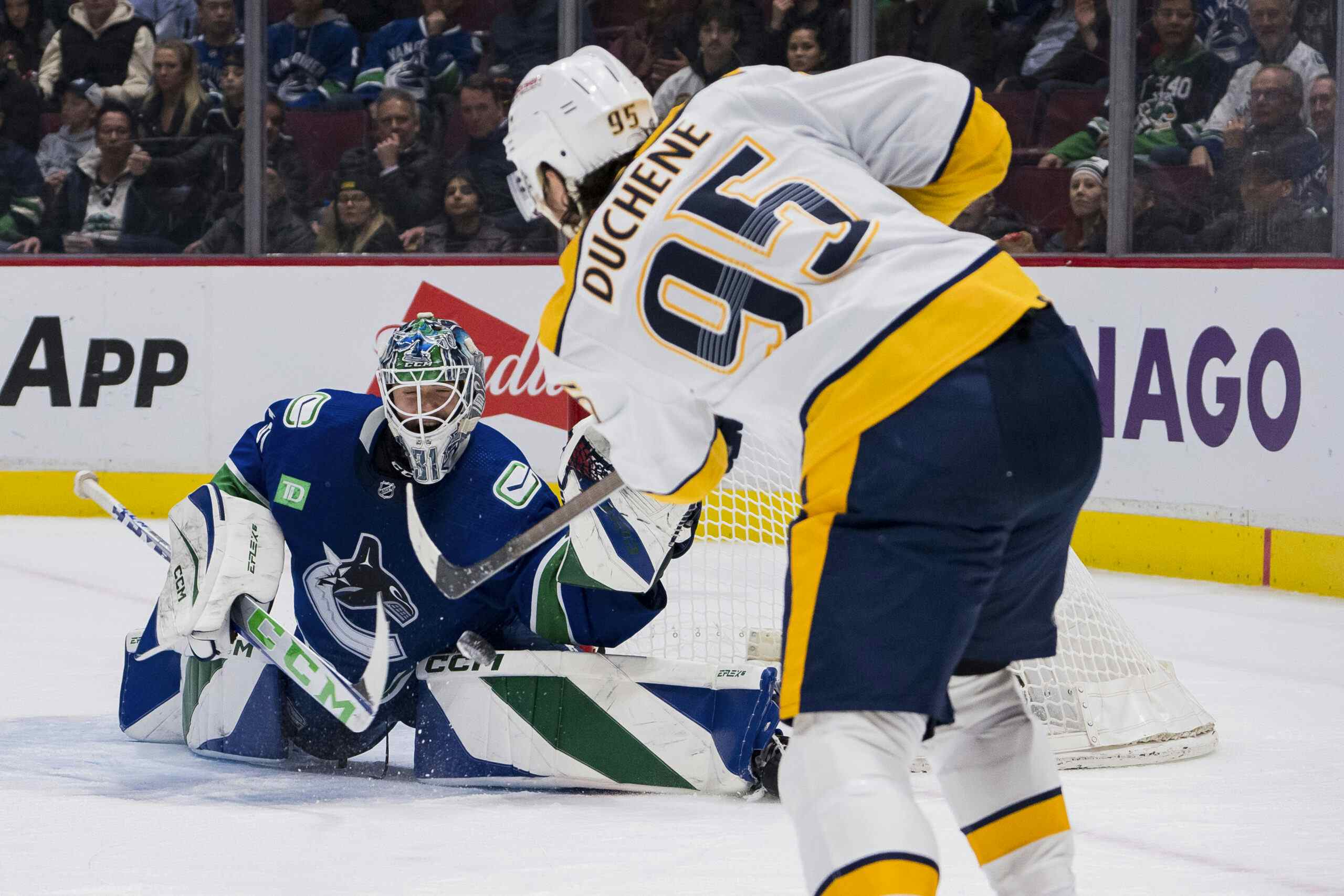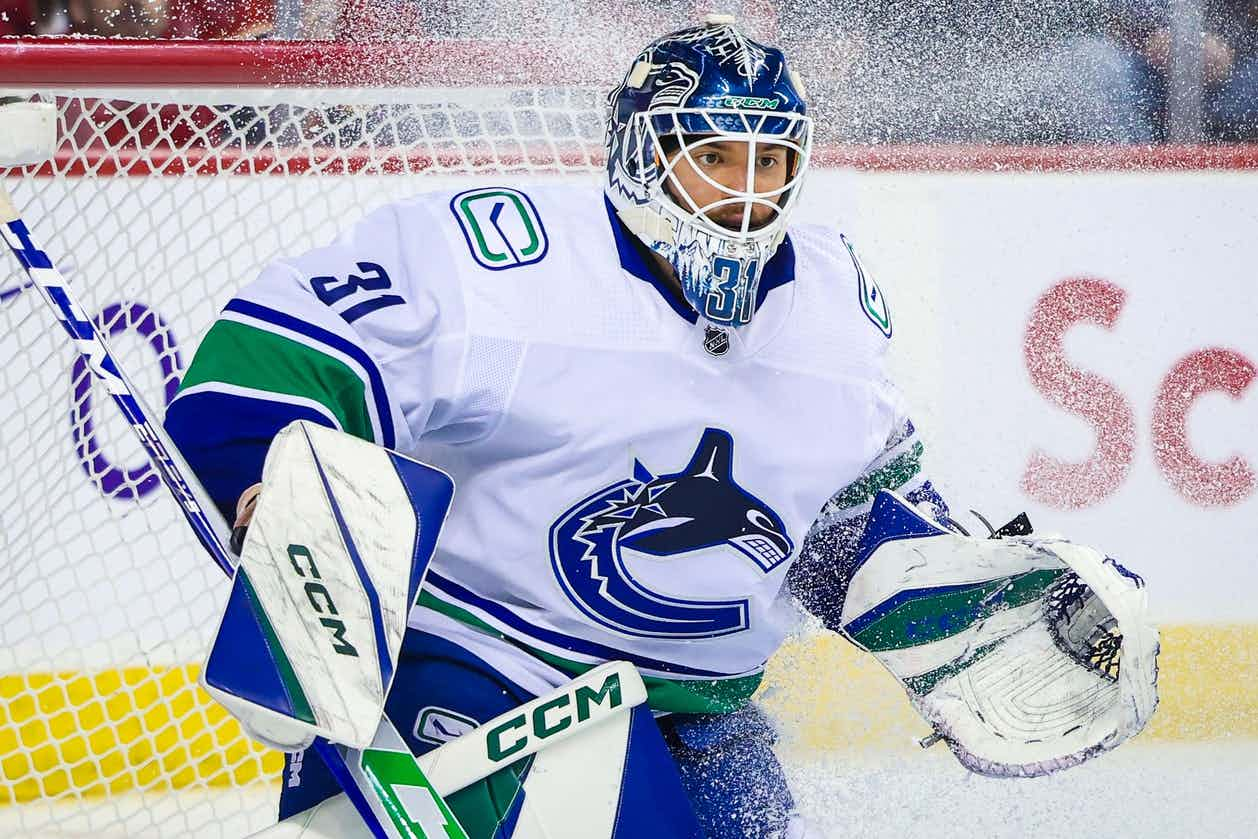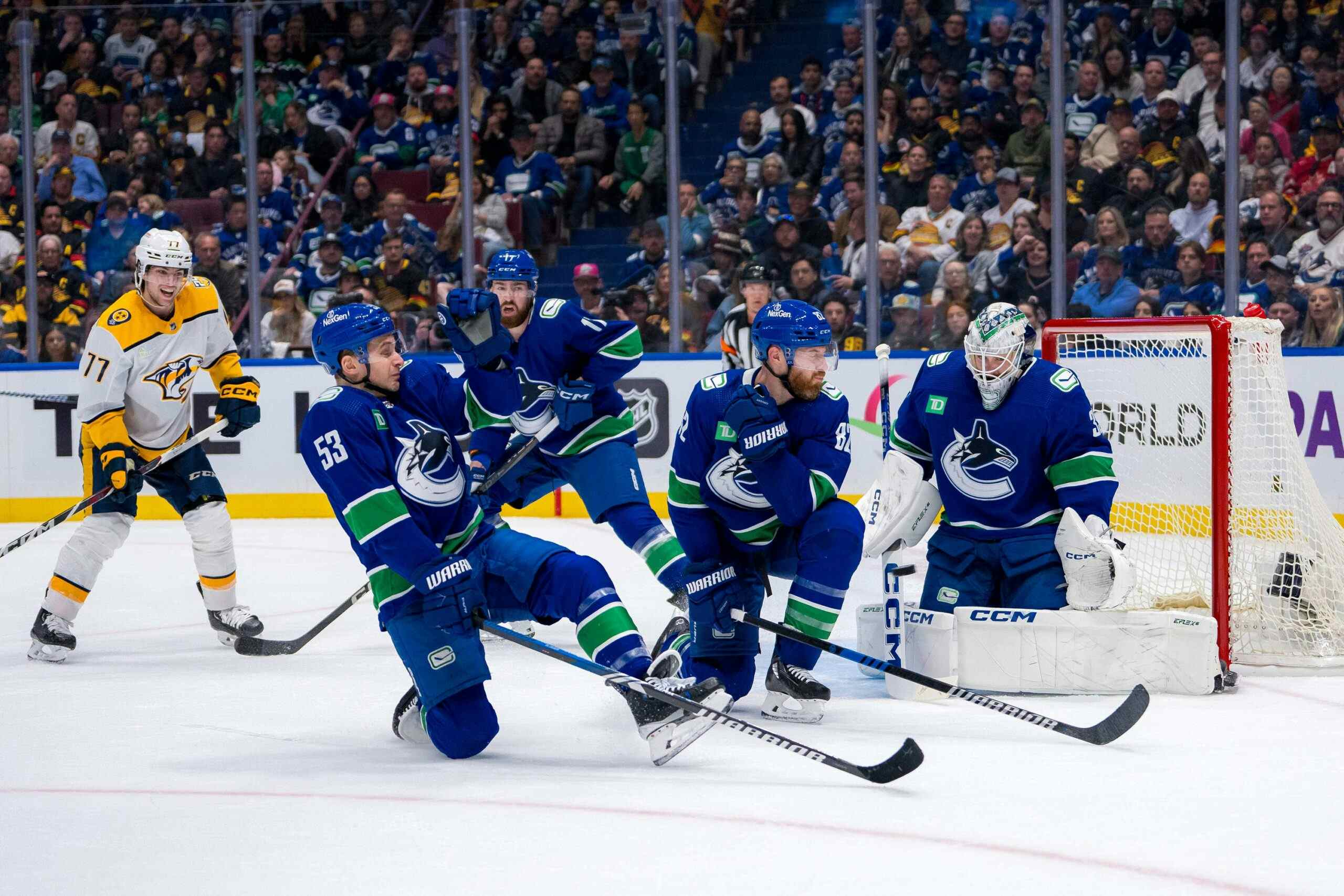First Look: What the Hell are the Vancouver Canucks Doing?
By J.D. Burke
7 years agoThe Vancouver Canucks likely made the worst trade of the off-season a full month before it officially started, dealing Jared McCann and a pair of draft picks (their second and fourth round selections in 2016) to the Florida Panthers for Erik Gudbranson and a fifth round selection in the 2016 draft.
What the Canucks Lost
Though it likely wasn’t in his best interests, McCann was thrust into the NHL this season as an undersized 19-year-old centre, playing in a prescribed, sheltered role mostly within the Canucks bottom-six. McCann possessed NHL height but is still in the process of adding to his frame — a noticeable omission from his physical tool-kit, made noticeable in the faceoff circle and defensive zone particularly.

That shouldn’t take away from what McCann accomplished in spite of the physical limitations that were present in his game, though. He made excellent strides from his draft season, developing an NHL calibre shot that took defenders and goaltenders alike by surprise on more than one occasion. McCann’s 18 points in 69 games were good for second among Canucks rookies (a surprisingly populous group) behind just Ben Hutton’s 25 points.
It’s not unimaginable based on what McCann produced last season and the net positive possession impact he had on the Canucks lineup, that he could have provided scoring and two-way impact commensurate with what one might expect from a third-to-fourth line tweener. Getting that kind of value from a player in the third year of their draft development with the 24th overall selection is exactly the kind of added value that comes with having a master scout at the top of the pecking order.
Which brings us to the matter of the draft picks the Canucks parted with in this deal — specifically, the 33rd and 93rd overall selections in the upcoming draft. These aren’t high percentage picks and they don’t have a particularly good chance of landing the Canucks top of the lineup talent. Based on the work we’ve done with our prospect profile series, I can tell you that the vast majority of forwards and defenceman in that range span from middle to bottom of the lineup players. There will be exceptions to the rule in either direction, but that’s what one should expect.
Put in more concrete terms, the 33rd overall selection the Canucks relinquished carries a 34% chance of developing into an NHL player. The 93rd overall selection, a 24% chance. I’ve drawn those numbers from Scott Cullen’s research on the value of individual draft selections, which uses the 100 game threshold to determine success.
What the Canucks “Gained”
The Panthers have likely failed to secure what most might suggest is a fair return on the third overall selection they invested in Gudbranson at the 2010 draft, but they developed a bona fide NHL defenceman all the same. Gudbranson is 24, turns 25 next season and has 43 points to show for his 309 games of NHL action. As a player that’s just entering his prime years, this is more or less the player Gudbranson is and will be for the foreseeable future. A stay-at-home defenceman, with good size and physicality at 6’5″.

Usually, I think of the term “stay-at-home” defenceman as code for bad. If you’re staying at home, it means that your team struggles to push play into the opposition’s end with you on the ice. That’s not necessarily a good thing. There are exceptions to the rule, though. Look at Chris Tanev. He has a strongly positive contribution to the Canucks ability to suppress shots and is a net positive possession player when shots for are accounted for.
Gudbranson isn’t there yet and it’s fair to wonder at this stage if he ever will be. The Panthers have haemorrhaged shot attempts with Gudbranson on the ice, as he’s only been in the black by Corsi For percentage once in his entire career — even then, he had a negative relative impact. And while one might suggest that the time he spent attached to Willie Mitchell’s hip at even strength didn’t help his cause this season, Gudbranson’s 5.6 FA60RelTm (good for tenth worst in the league last season) indicates that the aggregate of his impact on his teammates ability to suppress shots was hugely detrimental.
At the right price, Gudbranson might be intriguing as a resurrection candidate. Defencemen with his size are desirable, particularly in the Western Conference where durability is an especially important quality. Gudbranson can skate, hit and brings just the right amount of snarl each shift. If the Canucks liked Luca Sbisa in scrums, they’re going to love Gudbranson.
The problem is, this isn’t the right price and they likely can’t foster an environment in which they can hone on these innate physical skills. The Canucks, in all likelihood, have designs on playing Gudbranson in their top-four. If his career to this point is indicative of what he’ll bring to the Canucks lineup, that’s a horrifying thought.
Conclusion
I don’t have a fucking clue what the Canucks are trying to accomplish. Gudbranson is 24, has one year remaining on his contract and is due for restricted free agency not long after. His career to this point suggests he might be fit for a third pairing role, but even that’s a dodgy proposition. Consider for a moment that he was passed by nearly every single Panthers defenceman on the depth chart this season and it’s all the more puzzling that they expect him to “insulate” younger, less prepared defenders.
Gudbranson for McCann straight up is a lost trade. Gudbranson for McCann and the fourth-round selection is a bad, bordering on indefensible trade. Gudbranson for McCann along with the 33rd and 93rd overall selections in the upcoming draft is absurd, bordering on laughable.
The Canucks might have improved their second pairing. That’s entirely possible. Hell, considering the fact that McCann was likely to start next season with the Utica Comets, they’ve secured the better of the two players… for next season. It’s worth noting, though, that improvement is a relative term and the product they’re improving upon couldn’t get any worse. And oh, what a cost they paid for that marginal improvement.
Recent articles from J.D. Burke





